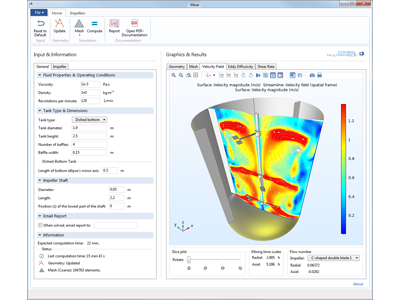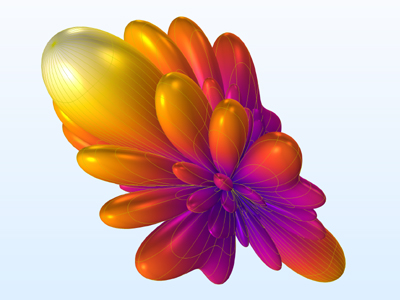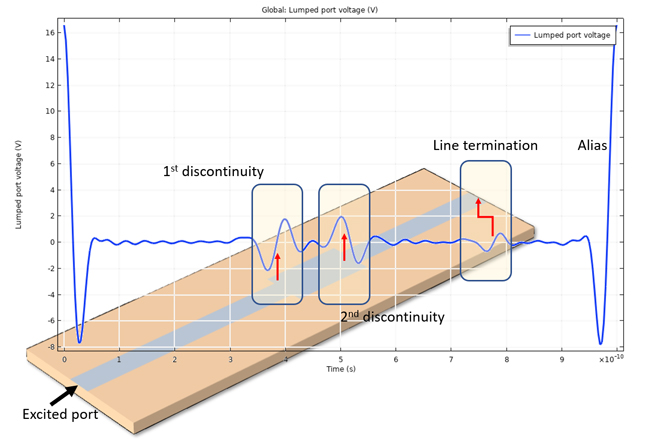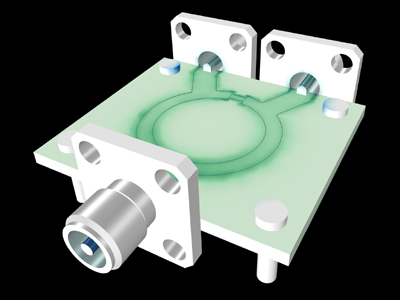 At its annual conference, COMSOL announced the latest version of COMSOL Multiphysics Version 5.4, which in addition to two new products provides performance improvements and additional modeling tools. Overall platform improvements included:
At its annual conference, COMSOL announced the latest version of COMSOL Multiphysics Version 5.4, which in addition to two new products provides performance improvements and additional modeling tools. Overall platform improvements included:
The COMSOL Compiler allows designers to create standalone COMSOL Multiphysics applications. Compiled applications are bundled with COMSOL Runtime™ and no COMSOL Multiphysics or COMSOL Server™ license is required to run them. You can distribute such applications with no further license fees allowing industry experts to create simulation applications with the Application Builder that was released a few years ago. This has provided a new way for teams of engineers and scientists to bring the use of simulation to non-specialists. With COMSOL Compiler user can compile an application into a single executable file for unlimited use and distribution. This is a unique way for our industry to develop and propagate easily useable simulation tools.
The Composite Materials Module delivers modeling tools for users working with layered materials such as PCBs. By combining the Composite Materials Module with new functionality for layered shells available in the Heat Transfer Module and the AC/DC Module, users can perform multiphysics analysis such as Joule heating with thermal expansion. “The ability to couple structural mechanics analysis in layered shells with heat transfer and electromagnetics, provides users with unique multiphysics modeling capabilities,” said Nicolas Huc, technical product manager at COMSOL. An important application of multiphysics analysis in laminated materials is managing the impact of lightning strikes on wings and wind turbine blades within aerospace and wind power industries.
COMSOL Multiphysics Version 5.4 comes with numerous productivity improvements such as the ability to use multiple parameter sets in a model, including parametric sweeping over multiple parameter sets. Furthermore, users can now organize the Model Builder nodes into groups and assign custom coloring schemes to geometry models.
RF Module 5.4 Highlights
 Comsol also now has uniform antenna array factor function for quick evaluation of the radiation pattern of an antenna array by using an asymptotic approach such as multiplying the far-filed of a single antenna with a uniform array factor. It also has quick estimation of the far-field response of the equivalent 3D model from 2D axissymmetric so another way to speed up modeling. There are also more far-field post-processing variables to quickly analyze the data.
Comsol also now has uniform antenna array factor function for quick evaluation of the radiation pattern of an antenna array by using an asymptotic approach such as multiplying the far-filed of a single antenna with a uniform array factor. It also has quick estimation of the far-field response of the equivalent 3D model from 2D axissymmetric so another way to speed up modeling. There are also more far-field post-processing variables to quickly analyze the data.
The RF Module extends the Material Library with more than 40 new laminate PCB materials from Isola (many of the Rogers laminates are already in the module) to help in modeling high frequency boards. The electrically thick layer option now makes the 2 domains adjacent to the transition boundary uncoupled so the boundary perform like an interior impedance boundary condition but the geometry does not have to be the domain anymore.
TDR analysis is now feasible by performing the frequency to time FFT after the conventional frequency domain study giving users a virtual VNA helping to identify physical discontinuities and impedance mismatches on the transmission line by looking at the signal fluctuation in the time domain. This is 5-10 times faster and finite element analysis.

Far-field domain/calculation is now available from EM Wave, Transient physics interface. So a wideband antenna far-field pattern analysis in the frequency domain can be obtained by performing a transient response analysis and time to frequency FFT. By exciting an axisymmetric scatterer with a circularly polarized background field in 2D axisymetric geometry, the far-field and RCS of the same scatterer in 3D can be quickly estimated using norm3DEfar function.
 There are also some GUI improvements, more features for Time Explicit Physics Interface plus parts in the application library that can be used to quickly model components. Overall, the EM tools have been extended significantly and many new approaches allow for much faster modeling. Improvements include far-field functions and variables for efficient antenna and radiation pattern analysis, extended materials library and enhanced application examples with more visualization effects and deployment of realistic connectors from the RF part library.
There are also some GUI improvements, more features for Time Explicit Physics Interface plus parts in the application library that can be used to quickly model components. Overall, the EM tools have been extended significantly and many new approaches allow for much faster modeling. Improvements include far-field functions and variables for efficient antenna and radiation pattern analysis, extended materials library and enhanced application examples with more visualization effects and deployment of realistic connectors from the RF part library.

